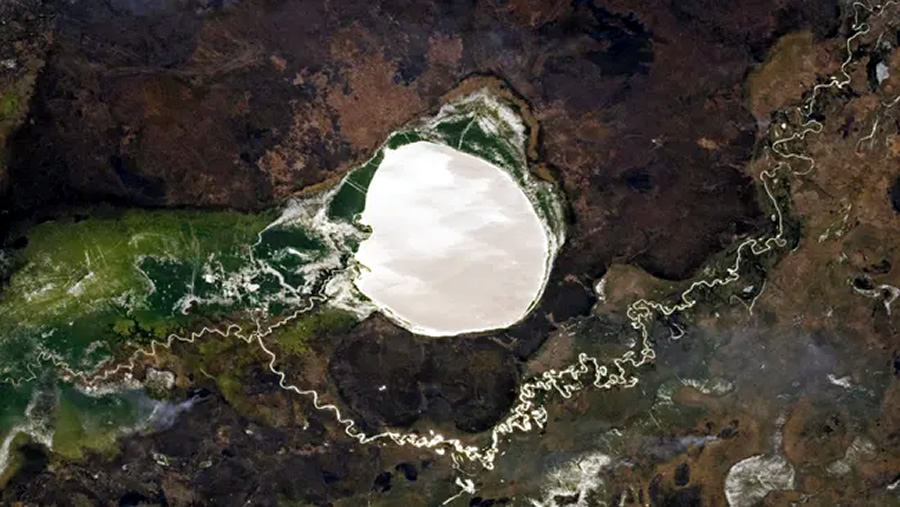
An image captured by the International Space Station has revealed a large "white spot" in the middle of the Sahel in northern Chad. The glow, some 12 kilometres in diameter, is not snow or salt, but an optical phenomenon caused by the reflection of the sun on the surface of Lake Iro.
The effect, known as sunglint, only occurs when the angle of the sunlight exactly matches the position of the camera in orbit. From space, the water is transformed into a silvery mirror that stands out against the arid landscape of the region. Even the Bahr Salamat River, which feeds the lake, reflects the sparkle, albeit less intensely because of its sinuous shape.
Lake Iro, with its almost circular contours, is not only striking for its brightness. Scientific research suggests that it may lie over an ancient impact crater formed by a meteorite millions of years ago. Its morphology and the presence of ancient crystals in the area support this hypothesis.
Recent studies have identified other possible impact structures in Chad, such as the Faya and Mousso formations. However, Iro stands out for its size and preservation, which makes it an exceptional candidate to confirm its extraterrestrial origin.
Astronauts on the International Space Station adjust their instruments to capture such reflections, which only occur at very precise moments. Beyond their visual appeal, these images offer clues to the geological history of remote and little-explored regions of the planet.
This finding is a reminder that, even with today's technology, the Earth still holds secrets visible only from space. In this case, a simple alignment of light, water and orbital gaze has brought to light an enigma that could date back to the planet's prehistory.
Source: livescience.com; elconfidencial.com
